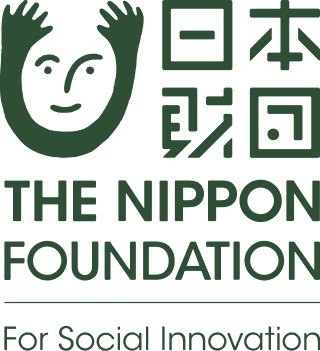First Step toward Post-Conflict ReconstructionCeremony to mark completion of housing in southeastern Myanmar
On March 10, 2017, a ceremony was held to mark the completion of 100 houses built as part of Japan’s support for reconstruction in villages in Kayin State in southeastern Myanmar, a region that has experienced continuous conflict for many years. This marked the first phase of The Nippon Foundation’s Rehabilitation Program. Ceremony attendees included: Dr. Tin Myo Win, vice chairman of the National Reconciliation and Peace Centre (NRPC) and chairman of the Peace Commission, who attended as the representative of State Counsellor and Union Minister for Foreign Affairs Daw Aung San Suu Kyi; Daw Nan Khin Htwe Myint, chief minister for Kayin State; Yohei Sasakawa, Special Envoy of the Government of Japan for National Reconciliation in Myanmar and Chairman of The Nippon Foundation; Ichiro Maruyama, minister counselor of the Embassy of Japan; and General Mutu Sae Poe, chairman of the Karen National Union (KNU). Approximately 600 local residents also gathered under a blazing sun, with the temperature at more than 35℃.

The village of Lay Kay Kaw in Kayin State is near the Thai border, a 10-hour drive from Yangon, Myanmar’s largest city. This region has experienced 60 years of armed conflict, during which many residents were forced to flee. With the fighting now having ended, the KNU, an ethnic armed organization that influences parts of the state, and the Myanmar government have requested assistance in building infrastructure to allow the former residents to return. In response, The Nippon Foundation launched a reconstruction support project in March 2016 using funds from Japan’s Ministry of Foreign Affairs. Since then, the project has built 1,250 houses, 7 schools, medical facilities, bridges, and wells in Kayin State, Mon State, and Tanintharyi Region.
The ceremony opened with Dr. Tin Myo Win conveying greetings on behalf of Ms. Aung San Suu Kyi, noting that “if the environment improves as a result of this project, people will be able to live in peace. I hope this project succeeds and becomes a model for the entire country.” Next, Mr. Sasakawa reflected on his own experience during World War II, and pointed out the significance of the ceremony, saying that “if a ceasefire saves just one person, the fruits of peace can be achieved, and I ask that everyone move forward toward the future.” He also appealed to the ethnic armed organizations that have not yet signed the ceasefire, emphasizing that a ceasefire will lead to a brighter future.

Of the 100 houses built, families have already moved into 60. One of the residents is a 32-year-old woman who fled the fighting when she was 12. She escaped across the border into Thailand, and lived in a refugee camp for 20 years. While living there she was unable to work and people’s movement was restricted. After the conflict ended, she was free to request to leave the camp and was able to return to her birthplace, Lay Kay Kaw. She was aware of the housing being built, and moved in two months ago. She commented, “Even though I was able to return, I had no money, and with four small children I am very grateful to have a house.”

Within the Rehabilitation Program, support projects are being implemented in other villages as well, with all of the construction scheduled for completion by August 2017. Going forward, the Myanmar government, ethnic armed organizations, and The Nippon Foundation intend to continue their tripartite cooperation, with the hope of continuing to make steady progress toward rehabilitation.
Related Link
Contact
Communications Department
The Nippon Foundation



